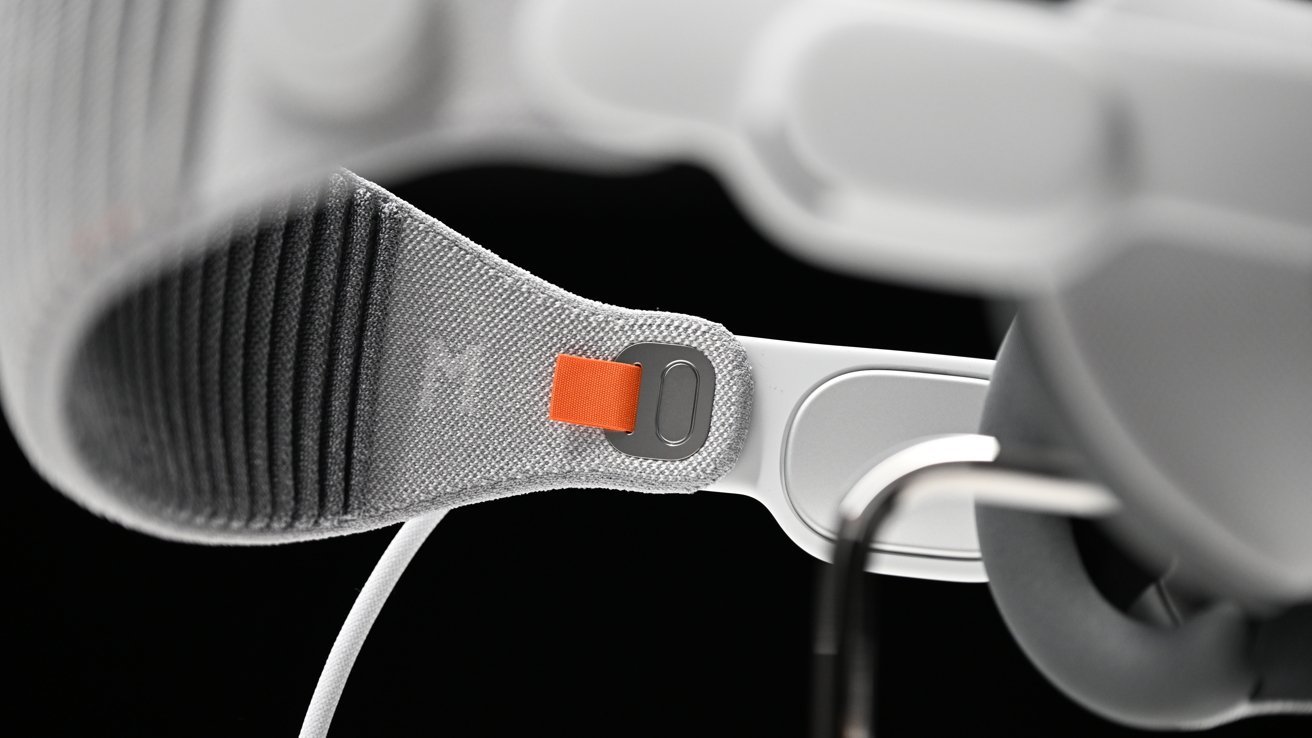Ordering Apple Vision Pro gets more complex with face scan
Customers hoping to get one of the few Apple Vision Pro units at launch will have to jump through a few hoops first, including a face scan.

Apple Vision Pro strap
Apple Vision Pro is a complicated product that needs various accessories sized to fit the visor to the user's face. Because of this, Apple will require users to perform a 3D scan of their face for accurate measuring via the Apple Store app while ordering.
Code for the face scan was discovered by MacRumors in the Apple Store app, which includes text that reads, "You may scan your face to determine your size for Apple Vision Pro." This scan likely isn't mandatory, but it provides users with sizing information so they don't have to guess at checkout.
Apple says it will offer different-sized head straps and light seals to ensure everyone gets a good fit. What sizes are available has not been shared, but Apple will include both a Solo Knit Band and a Dual Loop Band in the packaging.
Apple Vision Pro pre-orders begin on January 19, and customers will have to order sight unseen. Having the Apple Store app on iPhone scan the user's face is a useful addition, but it adds seconds during a checkout process where every moment is precious.
Rumors from supply chain analyst Ming-Chi Kuo suggest that availability will be severely limited at launch. There could be as few as 60,000 units shipping for the February 2 launch.
We're hopeful that Apple will introduce pre-order options prior to January 19 so customers can configure their order before the frenzy, similar to how iPhone pre-orders work. Information about storage tiers and other accessory options remains scarce.
Apple Vision Pro is up for pre-order on January 19 and ships on February 2. It starts at $3,499 with 256GB of storage.
Read on AppleInsider

Comments
I'm curious how big of a fiasco it's going to be to go into an Apple Store to demo a unit. They should do it by appointment with a required face scan before the appointment so everything is ready for you to try out. If they're just allowing everyone to come in to wait around in the store for one of the scarce demo units to be available, then having to go through a fitting and set up process along with being trained how to use it, man that will be a disaster with the time involved and so many waiting around to try it. But on the other hand, I can see people going to the store to try it out and being told, oh you have to make an appointment, the next one is in 3 weeks, and that not going over too well with customers either, so who knows.
And remember, most consumers wear prescription lenses so another $150 for special lenses will a big deal breaker, especially when prescriptions typically change year after year for people that do wear glasses.
Some experiences will leave people stunned like having a virtual human in front of them. Not a CGI-looking human but a real-time stereo projection of a person.
In this video 0:23, someone could be watching a nature documentary and see a whale breaching from the floor of their living room:
People who previewed movies on it scaled up to a billboard size said they wouldn't want to watch movies any other way.
Being able to lay back on a bed or lounger and have a giant Mac/iOS screen floating will feel more comfortable than holding an iPad.
At the right price, millions of people will want these experiences.
BTW, what a great Apple+ series this would make; go to the Apple store, try out the headset, and get replaced in the immediate future by a doppelgänger.
This is going to make Mark Zuckerberg really, really apoplectic; it is his idea, after all, and Mark should be able to capitalize on that.
a whale breaching from my floor would be coolin a fishing sim game, it as part of a documentary, it destroys the realism and takes the true environment away. Not a great use-case.
A lot of the inconveniences remain and will stay for a while.
However, it needs to get a chance at market acceptance and further development.
I'm a fan but I've always been a fan of this technology and that's why my wife likes her Quest in spite of those inconveniences, which are even greater on a far cheaper and older technology.
The promise has always been there, waiting for technology to solve the problems. That is happening (slowly) but I'm happy for those who are willing to cough up the money to beta test things and help economies of scale bring things to a wider market.
I'd rather it came to market than not.
It's like folding phones. First units were ultra expensive and had more tradeoffs. The success story was that people loved them and the folding market hasn't stopped growing (or improving) since.
In the case of the VP there is a major technology point that is beyond Apple's control: 5.5G.
Until 10gbps internet connections are commonplace it will be limited to a strictly 'local' framework scenario with regular internet access. It won't be until utrafast, QoS, low latency content becomes available that any XR units will be able to fully shine.